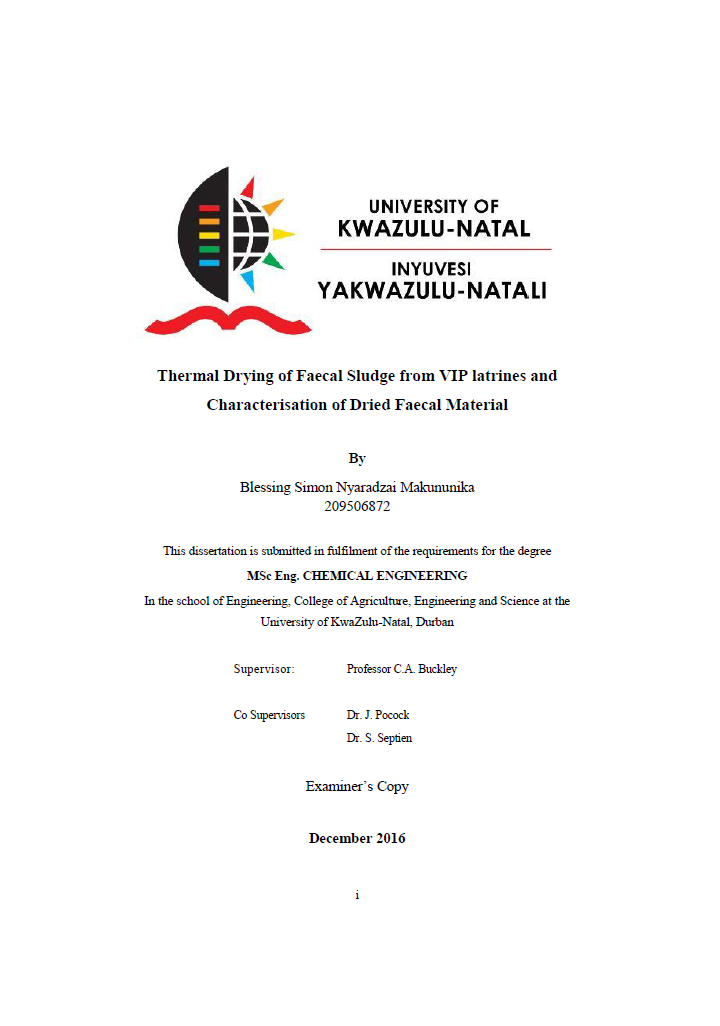Thermal Drying of Faecal Sludge from VIP latrines and Characterisation of Dried Faecal Material - Master thesis from the Pollution Research Group, at the University of KwaZulu-Natal (Durban, South Africa)
Makununika, B.S.N (2016)

Published in: 2016
Pages: 108
Author:
Makununika, B.S.N
Uploaded by:
Santiago Septien Stringel
Partner profile:
University of KwaZulu-Natal
2483 Views
29 Downloads
Location of library entry
Content - Summary
Ensuring safe, adequate, effective and sustainable sanitation is a major global challenge, especially in developing countries. This project is part of the ‘Reinvent the Toilet Challenge’ (RTTC) which focuses on the development and implementation of new and sustainable technologies for processing human excreta from on-site sanitation systems. This project investigated the drying kinetics of pit latrine sludge by convective drying using different air properties and analysed the resulting thermal properties and nutrient content of the sludge.
The drying experiments were conducted at air temperatures of 40 °C, 60 °C and 80 °C; relative humidity of 5 %, 15 % and 25 %; effective air flow velocity of 0.03 cm/s, 0.06 cm/s and 0.12 cm/s. The drying curves obtained indicated two distinct stages during the drying process, a constant rate period and the falling rate period. It was observed that the drying kinetics were greatly affected by temperature, relative humidity and sample thickness but the effect of air flow rate seemed negligible in the range of study. The effective moisture diffusivity was found to range between 7.8×10-8 and 2.1×10-7 m2/s. The relationship between the effective moisture diffusivity and temperature was described well using the Arrhenius type equation. The concentration of nutrients was no affected by the conditions except for ammonia and nitrates which decreased greatly. The thermal conductivity of the wet sludge, of moisture content 79 % (wb), was 55 W/m.K and it showed a linear relationship with the moisture ratio of the sludge sample. The average thermal conductivity of the final dried product was 0.04 W/m.K. Heat capacity also showed great dependence on the moisture content of the sample but it was not a linear relationship. The calorific value of the dried samples was around 13 MJ/kg. The drying curves were regressed against common empirical drying models and the Page model described the experimental data well of the models analysed, yielding a R2 greater than 0.996.
Additional information
Supervisors: Dr. Santiago Septien Stringel, Dr. Jon Pocock, Dr. Konstantina Velkushanova, Pr. Chris Buckley
Bibliographic information
Makununika, B.S.N (2016). Thermal Drying of Faecal Sludge from VIP latrines and Characterisation of Dried Faecal Material - Master thesis from the Pollution Research Group, at the University of KwaZulu-Natal (Durban, South Africa).
Filter tags
Case studies in other formats English Faecal sludge treatment processes Faeces or faecal sludge Sub-Saharan Africa















